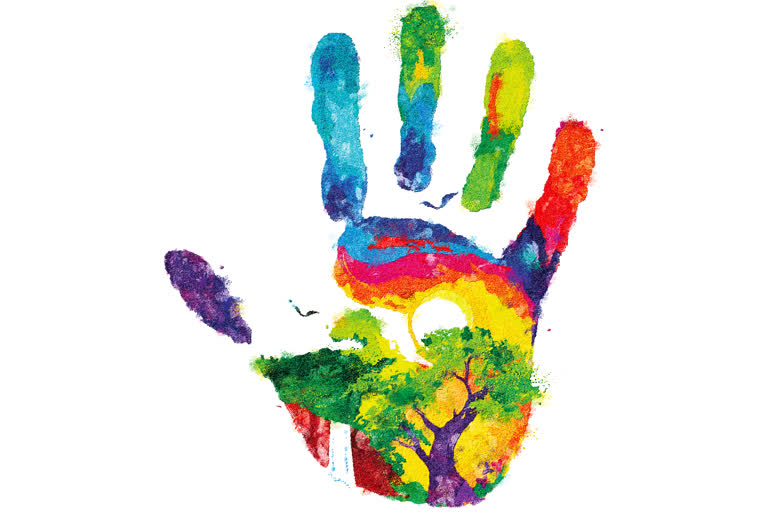The festival of color, joy, and happiness, Holi is celebrated in our country by people of all ages and classes with full enthusiasm. Bright colorful Gulal, water-filled Pichkari (water gun) and balloons, and a variety of delicacies add to the excitement of the festival. “Choti Holi” is celebrated a day prior to the actual “Rang Wali Holi”. While the day of Holi is filled with colors, a small prayer ceremony is organized on Choti Holi. There are different stories associated with both days, which explain the reason behind the way they are celebrated. Today, ETV Bharat Sukhibhava is going to share with its readers these stories and more about how this festival has a positive impact on our mental health as well as the environment.
Stories Associated With Holi
Holi festival is based on one of the famous legends of killing evil demoness Holika and another story is about Radha-Krishna. The story of Chhoti Holi is usually known by everyone. The story goes that Holika, aunt (bua) of Prahlad, stepped into the fire with little Prahlad, with a motive to kill him. Prahlad was a devotee of Lord Vishnu and Holika had a blessing that if she steps into fire wearing a specific ‘chunari’ that she had, the fire can do her no harm. On the day of Chhoti Holi, when Holika stepped into the fire wearing the same chunari, with Prahlad in her lap, by the grace of Lord Vishnu, the chunari fell on top of Prahlad and it saved his life, but Holika got burnt in the fire. Therefore, each year to mark the victory of good over evil, “Holika Dahan” ceremony is observed on the day of Choti Holi, where wood, dry grass, cow dung cakes, etc. are stacked in the form of bonfire and it is burnt after a puja or the rituals are performed.
The other story is related to Lord Krishna and his beloved Radha. Lord Krishna complained to mother Yashodha about Radha being fairer as compared to him, to which mother Yashoda suggested that Krishna should color Radha, in the color of his choice. The mischievous Krishna is said to have coloured his beloved in a hue of colors thereafter. A tradition that is thereby we have been following. Therefore, the day that follows Choti Holi is celebrated with colours or gulal and is called Holi. In India, cities around Mathura Vrindavan are known for the way they celebrate this very festival, with full enthusiasm.
Celebrating Holi Amidst The COVID-19 Pandemic
Once again, the cases of COVID-19 are on a surge in many states of India, which has lowered the enthusiasm in people to celebrate the colorful festival of Holi. Given that strict safety measures need to be followed to curb the spread of the virus, as far as possible, try to avoid playing Holi this year. However, even if you celebrate it, gather in very small groups and keep the following things in mind:
- Try to avoid hugging or shaking hands with people and throw gulal on each other from a distance, instead of standing close and applying it on their faces.
- Keep away from people who are ill or suffering from cold and cough.
- Try to keep your hands away from your eyes, nose, and mouth.
- Try to keep washing your hands often.
Colors And Our Mind
Colors, as we all know, are vital for a healthy body. While immersed in the vibrant colors of Holi, our mind and body experience myriads of benefits. Bright colors like red tend to stimulate the heartbeat & breathing. Colors like Yellow and Blue do not just bring in a calming effect on our senses but also surround us with a sense of joy and happiness.
